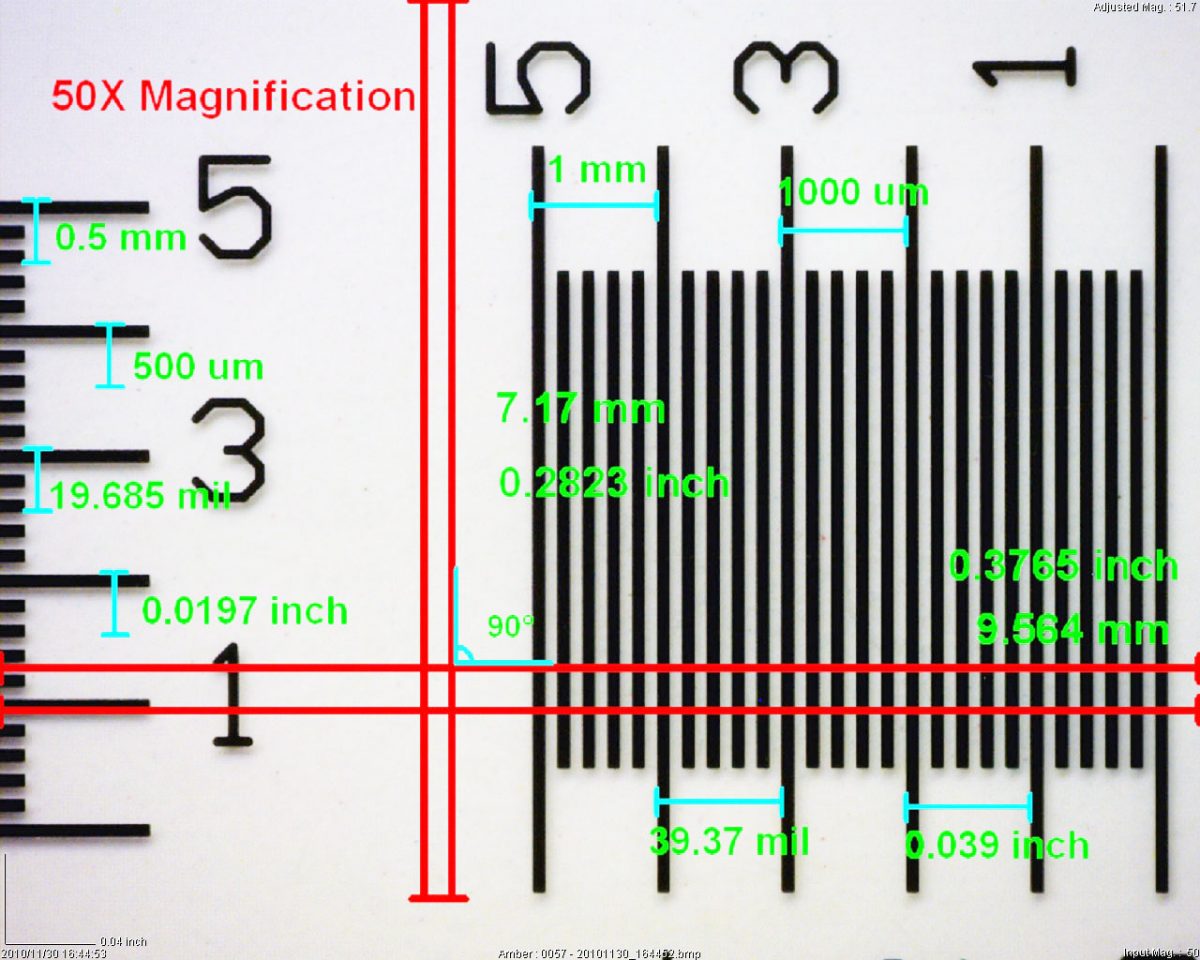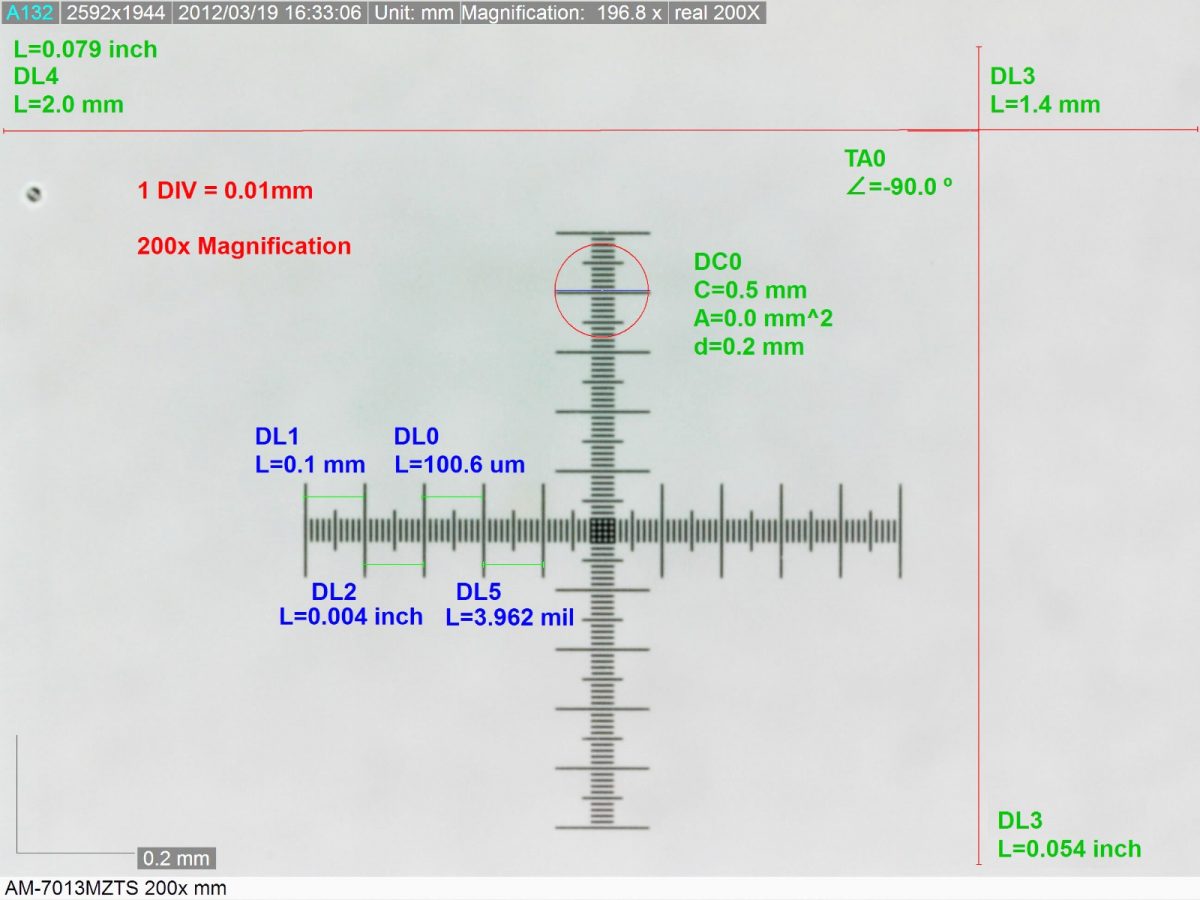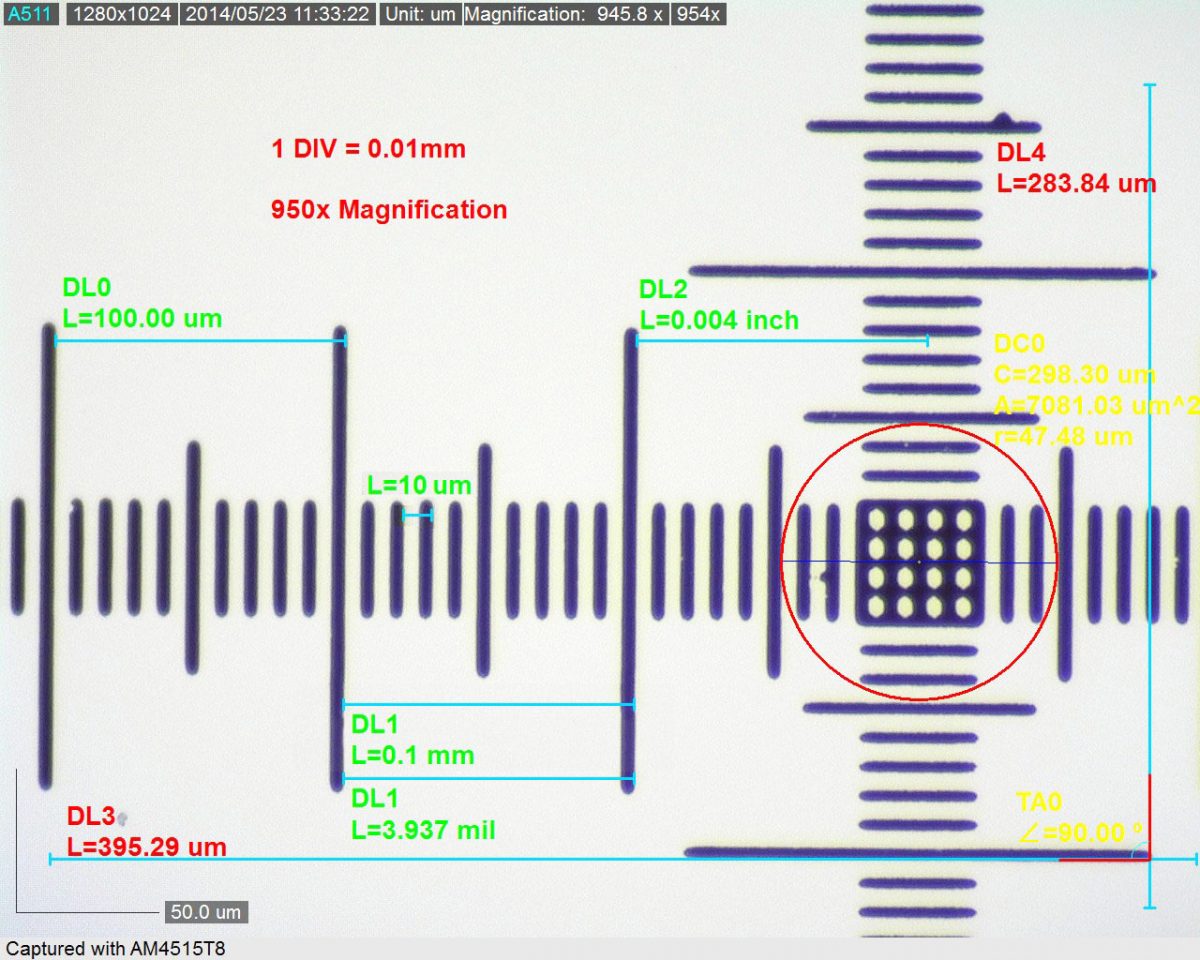How precise are the measurements of Dino-Lite? (Calibration and accuracy)
Measuring function
A majority of Dino-Lite microscopes and Dino-Eye cameras are equipped with 2-dimensional measurement features. These features are integrated in most USB models, while analog (TV) models do not offer such functions. The measurement functions are applied when the magnification rate is entered into the software (automatically for models with AMR) and the appropriate tool is selected in the software and applied to pixels. To increase accuracy, the arrow keys can be used to adjust lines by one pixel. Measurement tools include line, continuous line, fixed length line, edge detection line, point to line, polygon, circle, arc, angle, grid, and various others.
Measurement tips
The accuracy of the measurement is influenced by three factors: (1) the correct magnification, (2) the measurement setup, and (3) the handling.
- Calibration methods
Setup tips: Choosing the appropriate background and lighting can improve contrast. It can be useful to choose a light or dark background that contrasts with your subject. Some Dino-Lite models allow you to adjust the exposure. Operation Notes: Use sufficient magnification to prevent the measured dimension from appearing too small on the preview screen. The lower the magnification, the greater the measurement error may be. Here you can see how the magnification ratio matches the field of view: Field of view gallery.
Accuracy
The magnification values printed on the Dino-Lite instrument serve only as reference points. For precise measurements, a calibration standard is included with each model with measurement functions. Before measurement, calibration should be performed in the software together with the calibration standard. The Dino-Lite is an inexpensive instrument with a wide range of functions for various applications. With correct calibration, the measurement results can often compete with those of precision measuring instruments.
Precision is dependent on several factors, including magnification, screen resolution, and proper calibration. Due to the variable magnification of Dino-Lite microscopes, the tolerance varies depending on the magnification applied. For example, a model with standard magnification set to 220x and a screen resolution of 1920x1080 can be expected to have an accuracy of 0.001 mm. When using a model with high magnification at 930x and the same screen resolution, an accuracy of 0.3 µm can be expected. Further examples of accuracy are shown in the following figures.
50x / 1,3MP
Horizontal FOV [accuracy]: 9,564mm [+/- 0,192mm]
A pixel increment (an arrow key on the keyboard): ~7.4um

200x / 1,3MP
Horizontal FOV [accuracy]: 2mm (2000um) [+/- 0,04mm (40um)]
A pixel increment (an arrow key on the keyboard): ~1.5um

950x / 1,3MP
Horizontal FOV [accuracy]: 400um [+/- 0,08um]
A pixel increment (an arrow key on the keyboard): ~0.3um

Calibration
Manual method
For manual calibration, use the supplied calibration standard or another object with familiar, known dimensions. Select the "Calibration" button on the right side of the toolbar and follow the instructions on the screen. Here you can find a video tutorial for the calibration.
Automatic method
If you use an Edge series Dino-Lite with the QR codes on the CS-41 calibration target, you can speed up the calibration process. Take a look at this video to see how it works.
Certified calibration
Currently, we are not aware of any institutions that certify the calibration of variable magnification digital microscopes for measurements. However, it is possible to calibrate measurement-capable Dino-Lite models with a certified calibration standard from a third-party supplier. Instead of using the calibration standard supplied by Dino-Lite, simply send a certified gauge block or ruler.
- 3113
- 4113
- 4115
- 4515
- 4517
- 4915
- 4917
- 7115
- 7515
- 7915
- 73115
- 73515
- 73915


